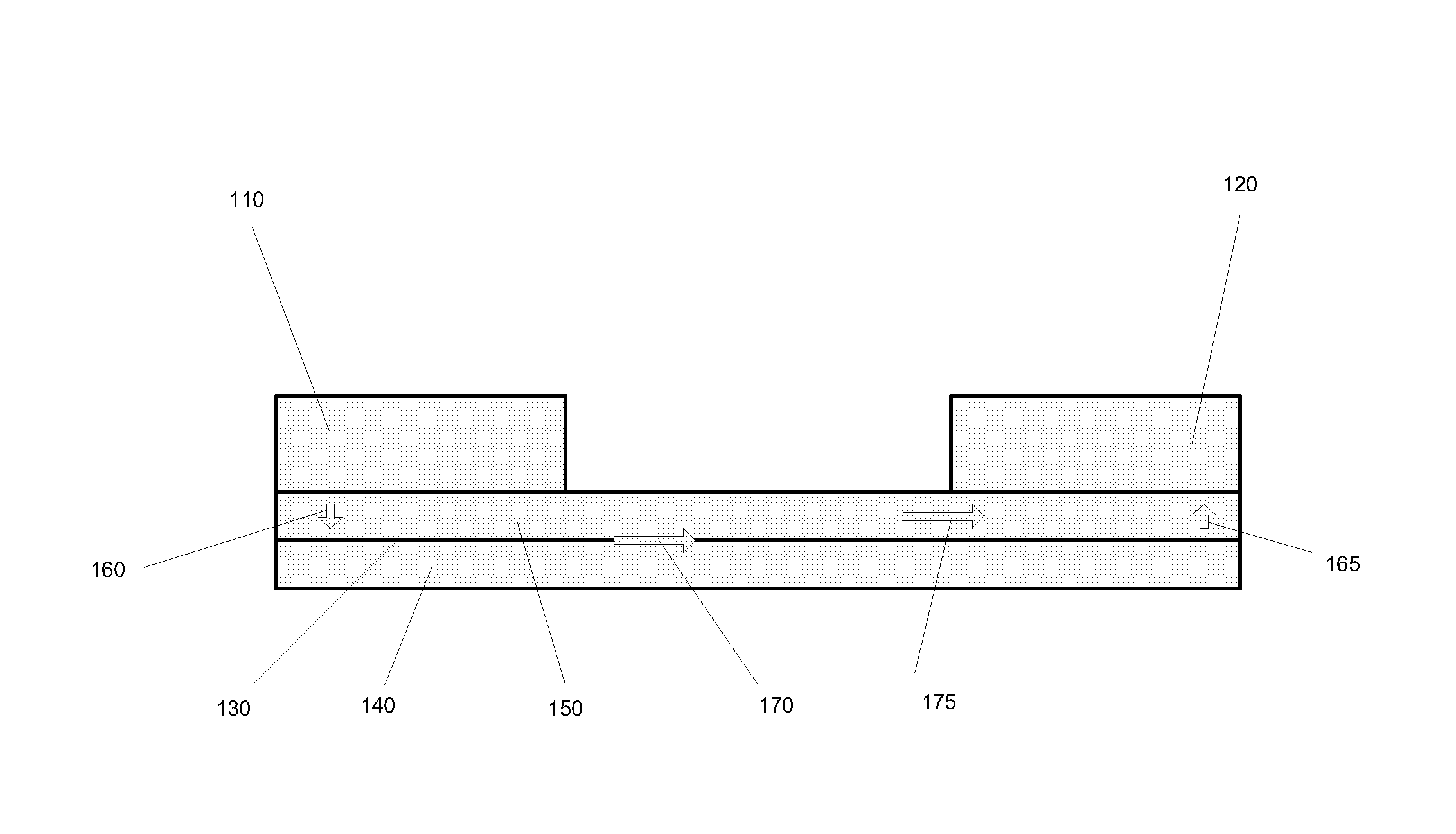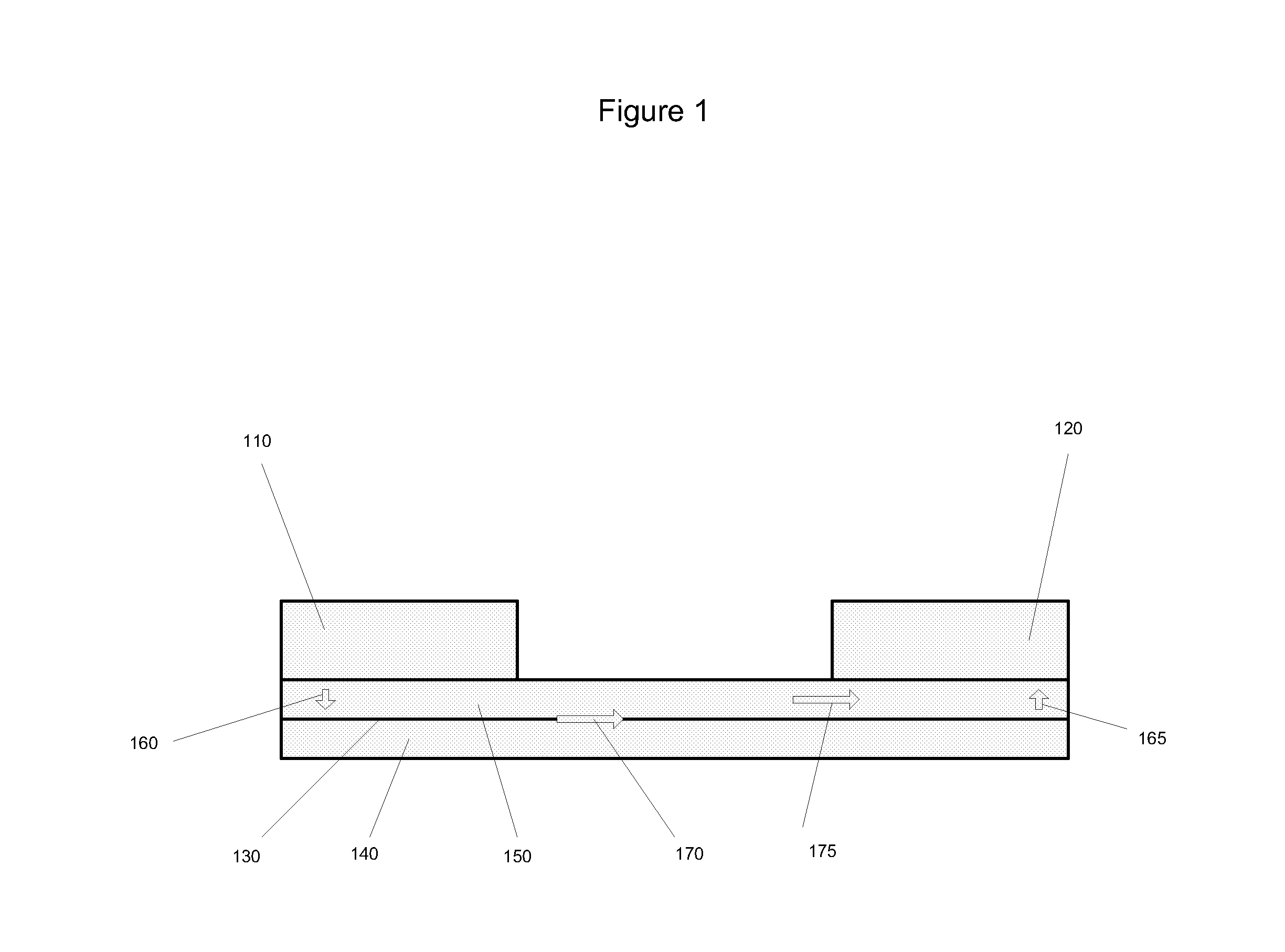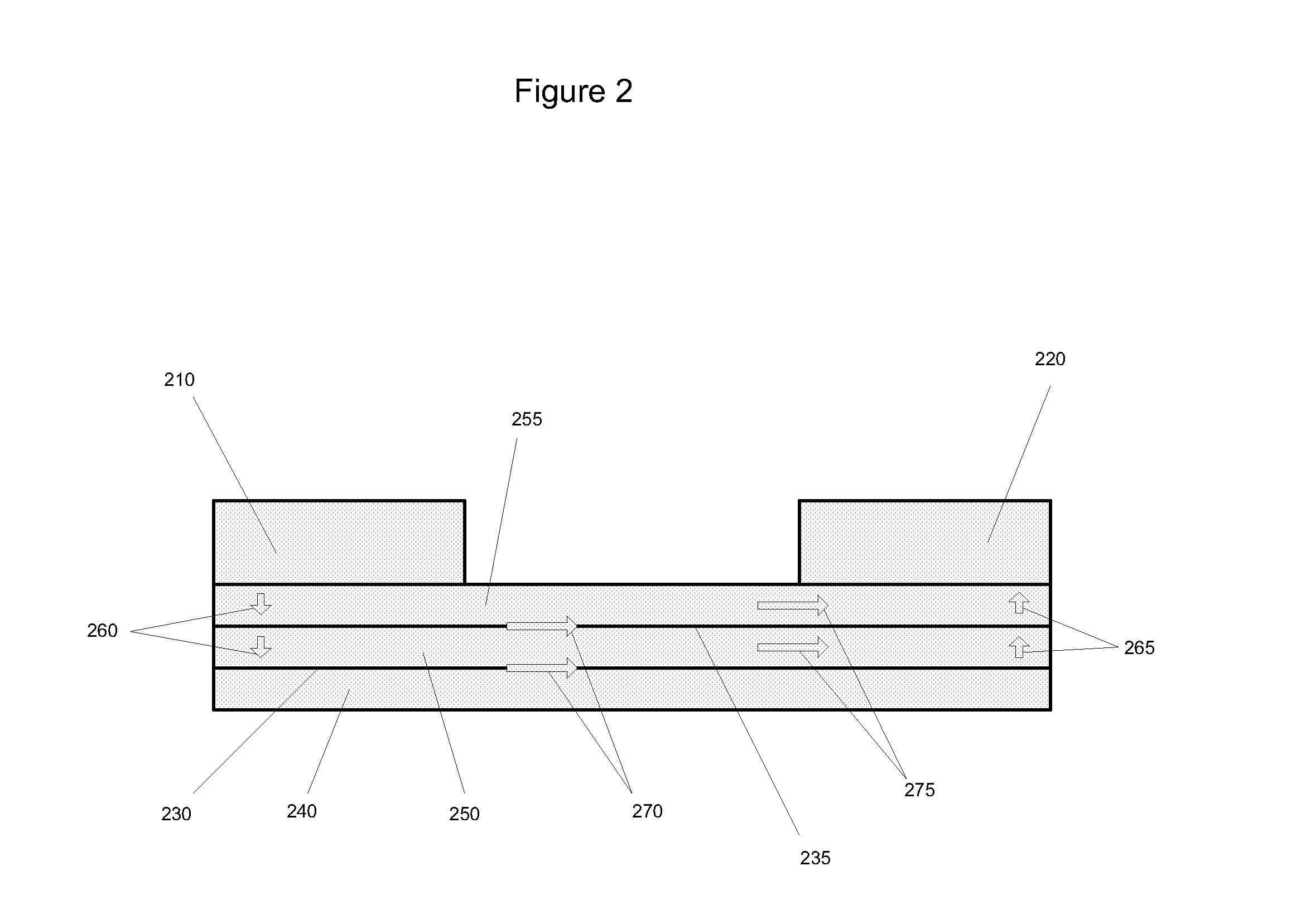Low temperature solid oxide cells
a technology of solid oxide cells and low temperature, which is applied in the direction of cell components, sustainable manufacturing/processing, instruments, etc., can solve the problems of increasing the cost of solid oxide fuel cells, the cost of certain applications of exotic materials, and the explosion of the array of materials now available to construct these cells
- Summary
- Abstract
- Description
- Claims
- Application Information
AI Technical Summary
Benefits of technology
Problems solved by technology
Method used
Image
Examples
example 1
Electrolyte on Glass Substrates
[0211]Forty glass microscope slides measuring 1″×3″ (Ted Pella, Inc.) were obtained. Each slide was dipped into a composition containing yttrium carboxylates and zirconium carboxylates (2-ethylhexanoates) having a metal concentration of about 1 g / kg, and 15% atomic percent yttrium, withdrawn, heated to 420 to 450° C. in air and allowed to cool, thereby forming a single layer of yttria-stabilized zirconia (“YSZ”) on both sides of the glass. Then, the slides were dipped in a composition containing platinum (II) 2,4-pentanedionate in chloroform (Alfa Aesar), having 1 g Pt / kg composition diluted with 2-ethylhexanoic acid, withdrawn, heated to 420 to 450° C., and allowed to cool. The glass slides now had a layer of platinum oxide over a layer of yttria-stabilized zirconia on both planar sides of the glass.
example 2
Assembling Substrates with Spacer Elements
[0212]The electrolyte-coated substrates prepared in Example 1 were stacked together, each slide separated from the one below by two parallel strips of ceramic paper (McMaster) measuring 3″ long by 2 mm wide and about 0.5 mm thick. The ceramic paper spacer elements were saturated with high temperature pipe thread sealant (McMaster). Thus, the substrates and the ceramic paper spacer elements formed three passages, two side passages (“first passages”) and a central passage (“second passage”). The assembled substrates were compressed together in a rig similar to the one depicted in FIG. 7, heated in an oven set to 200° C. for one hour, and allowed to cool, whereupon it was observed that the electrolyte and the ceramic paper had bonded with the sealant.
example 3
Forming Electrodes
[0213]The assembled substrates with electrolyte were placed in a vacuum vessel with the substrates and ceramic paper spacer elements perpendicular to the horizontal, thereby exposing the passages defined by the substrates and the ceramic paper. An electrode composition containing platinum (II) 2,4-pentanedionate in chloroform (Alfa Aesar) (12 g Pt / kg, about 8% by weight of final electrode composition), yttrium carboxylates and zirconium caboxylates (30 g metal / kg, 15% atomic percent yttrium, about 8% by weight of final electrode composition), nickel flakes coated with silver (45% by weight of final electrode composition), nickel spheres coated with silver (30% by weight of final electrode composition), colloidal silver (Ted Pella) (about 8% by weight of final electrode composition), was poured over assembled substrates into the passages. The vacuum vessel was closed and a vacuum was drawn until the electrode composition began to boil. The assembly was removed and h...
PUM
| Property | Measurement | Unit |
|---|---|---|
| temperature | aaaaa | aaaaa |
| temperature | aaaaa | aaaaa |
| temperature | aaaaa | aaaaa |
Abstract
Description
Claims
Application Information
 Login to View More
Login to View More - R&D
- Intellectual Property
- Life Sciences
- Materials
- Tech Scout
- Unparalleled Data Quality
- Higher Quality Content
- 60% Fewer Hallucinations
Browse by: Latest US Patents, China's latest patents, Technical Efficacy Thesaurus, Application Domain, Technology Topic, Popular Technical Reports.
© 2025 PatSnap. All rights reserved.Legal|Privacy policy|Modern Slavery Act Transparency Statement|Sitemap|About US| Contact US: help@patsnap.com



